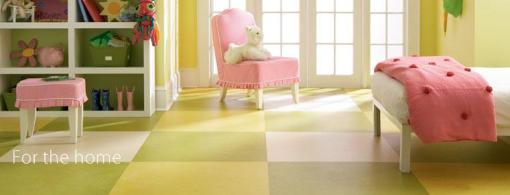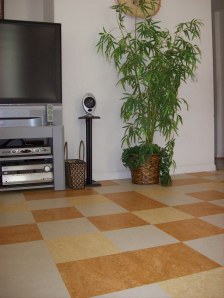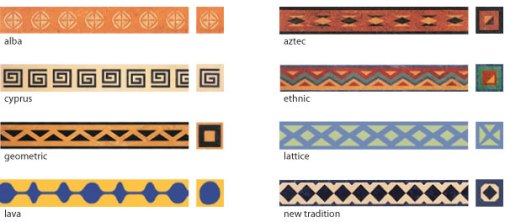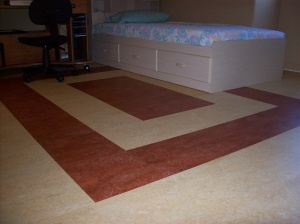We discussed about some design tips for Marmoleum floor patterns in an earlier post. People do find it intimidating when it comes to so many colors and design possibilities.

Marmoleum Click for residential applications
S ome homeowners like to go with checker board pattern just because it is an easy solution.
ome homeowners like to go with checker board pattern just because it is an easy solution. But to my mind, your pattern does not have to be so typical and so obvious. Now that you decided to go with Marmoleum Click for your new floors, make sure you get the most for your money. You really have so many options to add that visual impact to your room. Spend some time to figure out your unique design now. You will cherish your new floors for years to come.
But to my mind, your pattern does not have to be so typical and so obvious. Now that you decided to go with Marmoleum Click for your new floors, make sure you get the most for your money. You really have so many options to add that visual impact to your room. Spend some time to figure out your unique design now. You will cherish your new floors for years to come.

Sahara, Van Gogh, and Barbados from Marmoleum Click series
See if you would like to go with a little bit of abstract design. Add a bright accent color in to couple of coordinating colors, and play with them! Depending on how big your space is, you may have a module of 4 or 9 or 16 tiles and repeat it.
Using a border around the perimeter or say, kitchen island, also is a simple way to add character.

Various borders are available from Forbo
If you are designing kids’ rooms, involve them in picking colors. A simple pattern like this is enough to create visual interest.

accent color to add that character
A rug like look may work good in any bedroom.

I don't need an area rug for 10 months of the year, really!
Make sure you try to stagger the joints if you are using panels. With the revised Click II system, the length of a panel now equals to 3 square tiles. It may be hard to calculate the quantities for each color if your pattern is too complicated. Why not hire the professional instead! At LFD we are experts at space design, material estimation, and installation. Whether it is just new floors or you need a holistic design upgrade, talk to us and we would be happy to assist you.


